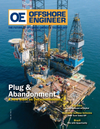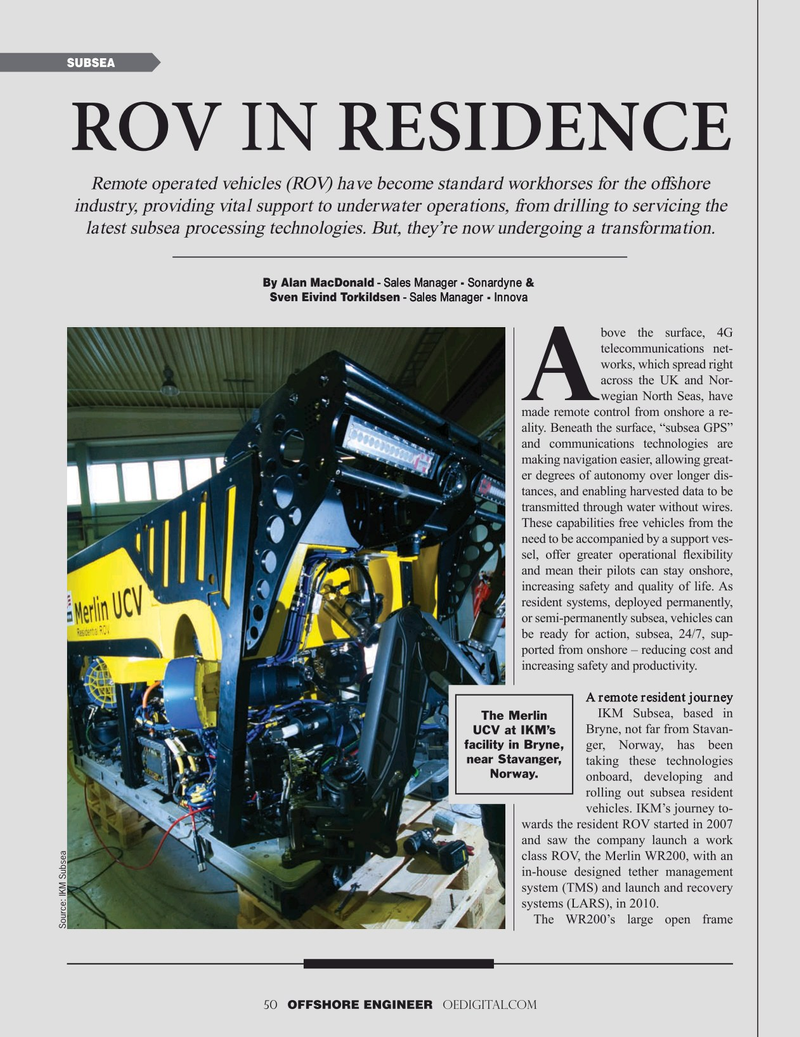
Page 50: of Offshore Engineer Magazine (Sep/Oct 2019)
Big Data and Digitalization
Read this page in Pdf, Flash or Html5 edition of Sep/Oct 2019 Offshore Engineer Magazine
SUBSEA
ROV IN RESIDENCE
Remote operated vehicles (ROV) have become standard workhorses for the offshore industry, providing vital support to underwater operations, from drilling to servicing the latest subsea processing technologies. But, they’re now undergoing a transformation.
By Alan MacDonald - Sales Manager - Sonardyne &
Sven Eivind Torkildsen - Sales Manager - Innova bove the surface, 4G telecommunications net- works, which spread right across the UK and Nor-
Awegian North Seas, have made remote control from onshore a re- ality. Beneath the surface, “subsea GPS” and communications technologies are making navigation easier, allowing great- er degrees of autonomy over longer dis- tances, and enabling harvested data to be transmitted through water without wires.
These capabilities free vehicles from the need to be accompanied by a support ves- sel, offer greater operational ? exibility and mean their pilots can stay onshore, increasing safety and quality of life. As resident systems, deployed permanently, or semi-permanently subsea, vehicles can be ready for action, subsea, 24/7, sup- ported from onshore – reducing cost and increasing safety and productivity.
A remote resident journey
IKM Subsea, based in
The Merlin
Bryne, not far from Stavan-
UCV at IKM’s facility in Bryne, ger, Norway, has been near Stavanger, taking these technologies
Norway. onboard, developing and rolling out subsea resident vehicles. IKM’s journey to- wards the resident ROV started in 2007 and saw the company launch a work class ROV, the Merlin WR200, with an in-house designed tether management system (TMS) and launch and recovery systems (LARS), in 2010.
The WR200’s large open frame
Source: IKM Subsea 50 OFFSHORE ENGINEER OEDIGITAL.COM

 49
49

 51
51